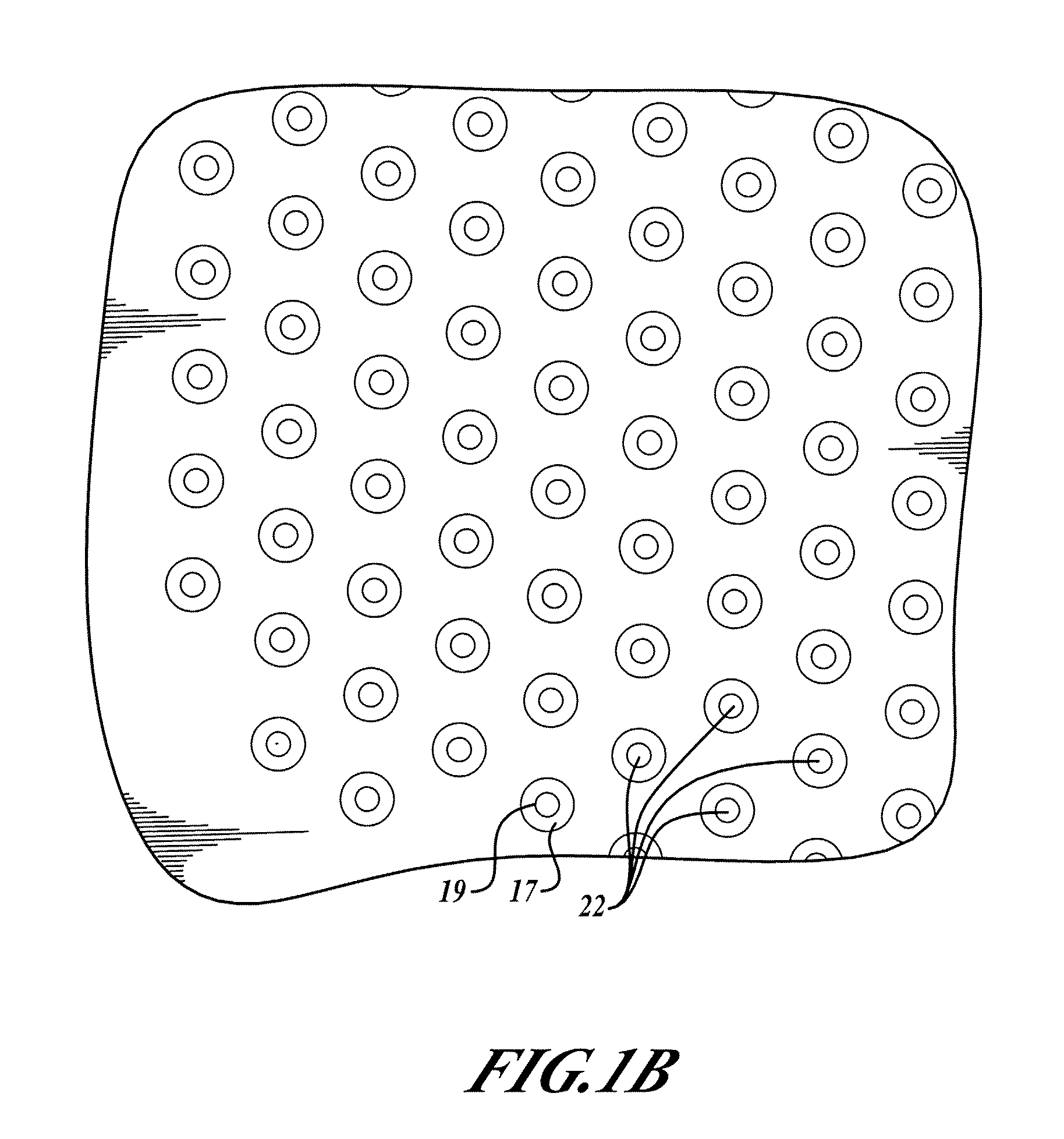Method for providing an efficient thermal transfer through a printed circuit board
a technology of printed circuit board and thermal transfer, which is applied in the direction of printed circuit, cable/conductor manufacturing, conductive pattern formation, etc., can solve the problems of unique thermal problems in the design of printed circuit board, designers may be forced to use more expensive metal core boards
- Summary
- Abstract
- Description
- Claims
- Application Information
AI Technical Summary
Benefits of technology
Problems solved by technology
Method used
Image
Examples
Embodiment Construction
[0011]FIG. 1A shows a top view of a portion of a printed circuit board (PCB) 20, including a slug pad 18 and multiple copper-lined and non-conductive material filled vias (or holes) 22. The slug pad 18 includes copper and covers the vias 22. The pad 18 provides a thermally conductive path to all of the vias 22 and helps to promote an even distribution of thermal flow through the area of the PCB 20 covered by the pad 18. FIG. 1B shows a magnified view of the vias 22 of FIG. 1A. The vias 22 include a copper lining 17 (which may include more than one layer of copper) and a filler material 19. FIG. 1C shows a side cross-sectional view of a PCB 20 with vias 22.
[0012]FIG. 2 shows a PCB 20, which may be made from FR4 circuit board material, according to the present invention with a top surface 21 and a bottom surface 23 after drilling one or more vias 22 through the board 20. Vias 22 are drilled in the area of the PCB 20 where a surface mount device (not shown) is to be mounted. One presen...
PUM
| Property | Measurement | Unit |
|---|---|---|
| thick | aaaaa | aaaaa |
| area | aaaaa | aaaaa |
| thick | aaaaa | aaaaa |
Abstract
Description
Claims
Application Information
 Login to View More
Login to View More - R&D
- Intellectual Property
- Life Sciences
- Materials
- Tech Scout
- Unparalleled Data Quality
- Higher Quality Content
- 60% Fewer Hallucinations
Browse by: Latest US Patents, China's latest patents, Technical Efficacy Thesaurus, Application Domain, Technology Topic, Popular Technical Reports.
© 2025 PatSnap. All rights reserved.Legal|Privacy policy|Modern Slavery Act Transparency Statement|Sitemap|About US| Contact US: help@patsnap.com



